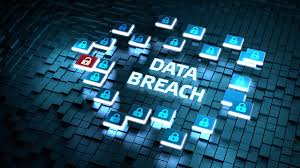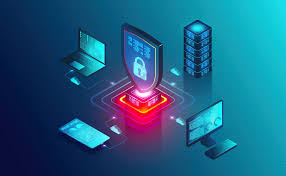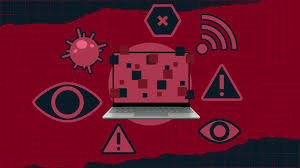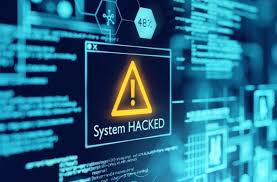Privacy Risks in Data Storage

The biggest risk associated with organizations collecting and storing large amounts of personal information are data leaks and data breaches. Data leaks are when personal, important information is exposed to people that should not have access to it. They are generally unintentional incidents and have a variety of causes. Outdated/bad security measures are the biggest cause, employee mistakes, malware, and lost devices are also causes of data leaks. Data breaches are when someone else from the outside breaks into the data and steals it. The causes for data leaks help intruders break in to the data. Phishing, when a trusted person is impersonated as a scam, is a big cause of data breaches. These causes for data leaks and breaches are important because as organizations gather more and more information loss of data becomes much more probable and also have a larger impact on the general public.
Many large companies now use many many security measures to prevent data leaks to protect their large amounts of information. One of these measures is constantly monitoring all entry and exit points of any and all data. This prevents data leaks because it allows companies to check all of these points and secure them if there are any possibilities of a leak occurring. Another one of these measures is encrypting the data to prevent intruders from using the data. Educating employees is another measure that is used to prevent data leaks and breaches. They are educated on how to counter phishers, which data can be safely accessed what can’t, and what security measures they have to go through to access information.
One real world example of a data breach is the National Public Data breach. This is one of the most impactful data breaches as National Public Data does employee background checks for millions of employees. It gathers lots of sensitive data about people to perform these checks and stores all of this information. This data includes addresses, social security numbers, and personal emails among others. All of this was taken and sold by hackers for millions of dollars, compromising the information and safety of millions of people.

Misuse and Cybersecurity

Computing resources include, but are not limited to personal computers, networks, internet access, and servers. Most people use these resources in normal, intended ways, but there are also many that use it for malicious purposes. One way that people misuse these resources is hacking and scamming. Personal computers and servers can be used with programs and other software to make hacking and scamming easier and automated. The freedom of the internet also allows people to make servers for illegal purposes. People can sell illegal items such as drugs, malware, other illegal programs, etc. on these servers. Networks can also be exploited for personal information on groups of people at a time.
Some strategies that are implemented to protect these computing resources from exploitation are two factor authentication, using stronger encryption, and reporting illegal, malicious sites. Two factor authentication is a very effective strategy to deter hackers and scammers from accessing a person’s account. It sends a verification code to your email or phone number after your account is logged into. This prevents access to the account unless the code is inputted. Reporting illegal sites can get them taken down and prevent further use of these websites.
One example of misuse of computing resources is the hacking of Steam accounts to steal items worth real life money. Steam, made by Valve, is the biggest gaming platform in the world and is generally used by anyone playing video games on their computer. One of Valve’s games, Counter Strike, has cosmetic items that are worth real money. These items are connected to a person’s Steam account and can be traded or sold. This is important because many people hack and steal accounts to trade these cosmetic items to themselves. Malicious software is used for this, and some create websites with bots that steal your Steam account and prevent your own access to it.

Unauthorized Access to Info

Most hackers and other people with malicious intentions get access to information they shouldn’t through a variety of methods. Phishing is one method that hackers use to get information and allows other methods that gain even more information to be used. Malware, spyware, and other malicious software are all common methods that hackers use to gain access to the information. Phishing helps hackers get these softwares through as the direct security is generally too strong to get through. An example of using other softwares to gain more information is ransomware. Ransomware encrypts all of the information the hackers have access to and locks the owner of the information out. This makes it so the hackers can use the info as ransom to gain more desirable information.
Some cybersecurity measures that are implemented to deter hackers and their methods of getting information are constantly updating antivirus software on any and all devices, use two factor authentication, using VPNs, and firewalls. VPNs are used to encrypt your data any where in the world so no public networks can be exploited to steal information. Two factor authentication can prevent any outsider from getting in without permission. Firewalls prevent any intruders from breaking in using any external software.
An example of phishing being used to cause a data breach is the Yahoo data breach, the biggest to date. A Russian hacker sent an email to a Yahoo employee pretending to be a trusted person and the email contained a link with malicious software. The employee clicked on this link and the hacker had access to all of Yahoo’s data. This hacker then copied the entire User Account Database that Yahoo had which contained the details of over 500 million accounts. This compromised millions of people’s information and is one of the reasons contributing to Yahoo’s downfall.

Computing Innovations

Computing innovations provide lots of benefits to the general public. A big recent computing innovation is artificial intelligence. Artificial intelligence has grown to a very high level and is very useful in day to day activities. They have the strength and are capable of helping in many different scenarios for all kinds of people. Productivity in many jobs like programming, engineering, and others are greatly boosted with the help of artificial intelligence.
Artificial intelligence also makes many challenges as people are relying on it too much and they are so strong jobs can be completely taken by them. Microsoft Copilot is one of if not the best AI for programming. It can write programs faster and better than most people. This results in many not checking for mistakes because they aren’t advanced enough to see the problems. The strength of artificial intelligence and how freely it can be accessed causes many problems regarding malicious activity. AI can be used to make scamming and hacking much faster and stronger. Malware can be made to bypass stronger cybersecurity measures, phishing can be optimized to get hackers as much information as possible, and data can be copied instantaneously.
One malicious use of artificial intelligence is impersonation. AI can harvest personal information of people very quickly using a variety of methods such as data mining, malware, and spyware. It can then use this information to format important documents exactly so they can be used for malicious purposes. AI can also recreate the photograph of someone for any documents such as a driver license. Voice changing AI can be used to impersonate others on phone calls and other recorded audio. This makes scamming much harder to prevent as it is getting harder and harder to distinguish fake and real documents and voices.

Elements
Text
This is bold and this is strong. This is italic and this is emphasized.
This is superscript text and this is subscript text.
This is underlined and this is code: for (;;) { ... }. Finally, this is a link.
Heading Level 2
Heading Level 3
Heading Level 4
Heading Level 5
Heading Level 6
Blockquote
Fringilla nisl. Donec accumsan interdum nisi, quis tincidunt felis sagittis eget tempus euismod. Vestibulum ante ipsum primis in faucibus vestibulum. Blandit adipiscing eu felis iaculis volutpat ac adipiscing accumsan faucibus. Vestibulum ante ipsum primis in faucibus lorem ipsum dolor sit amet nullam adipiscing eu felis.
Preformatted
i = 0;
while (!deck.isInOrder()) {
print 'Iteration ' + i;
deck.shuffle();
i++;
}
print 'It took ' + i + ' iterations to sort the deck.';
Lists
Unordered
- Dolor pulvinar etiam.
- Sagittis adipiscing.
- Felis enim feugiat.
Alternate
- Dolor pulvinar etiam.
- Sagittis adipiscing.
- Felis enim feugiat.
Ordered
- Dolor pulvinar etiam.
- Etiam vel felis viverra.
- Felis enim feugiat.
- Dolor pulvinar etiam.
- Etiam vel felis lorem.
- Felis enim et feugiat.
Icons
Actions
Table
Default
| Name |
Description |
Price |
| Item One |
Ante turpis integer aliquet porttitor. |
29.99 |
| Item Two |
Vis ac commodo adipiscing arcu aliquet. |
19.99 |
| Item Three |
Morbi faucibus arcu accumsan lorem. |
29.99 |
| Item Four |
Vitae integer tempus condimentum. |
19.99 |
| Item Five |
Ante turpis integer aliquet porttitor. |
29.99 |
|
100.00 |
Alternate
| Name |
Description |
Price |
| Item One |
Ante turpis integer aliquet porttitor. |
29.99 |
| Item Two |
Vis ac commodo adipiscing arcu aliquet. |
19.99 |
| Item Three |
Morbi faucibus arcu accumsan lorem. |
29.99 |
| Item Four |
Vitae integer tempus condimentum. |
19.99 |
| Item Five |
Ante turpis integer aliquet porttitor. |
29.99 |
|
100.00 |







